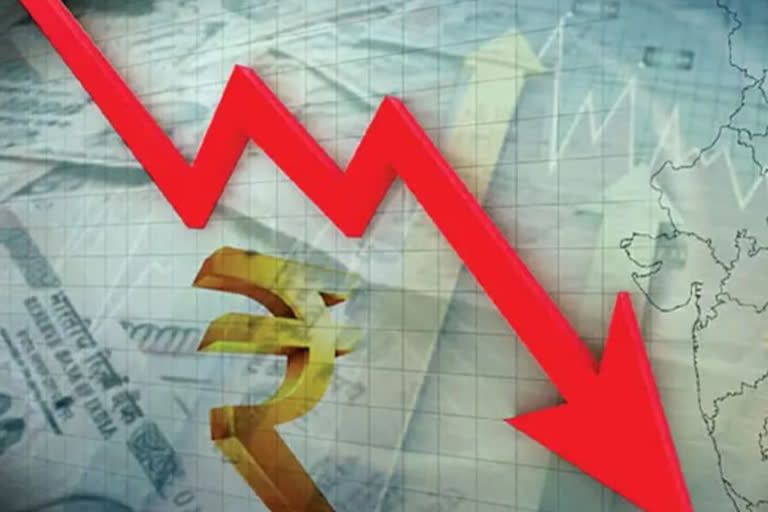New Delhi:The overtwo-year-long outbreak of Covid-19 global pandemic has severely dented the fiscal health of a large number of states in the country as 18 states have reported a higher fiscal deficit that is 4% of their gross state domestic product (GSDP), while six of them reported more than 4% deficit in FY 2021-22, showed an analysis of the official data.
The analysis conducted by State Bank of India’s Chief Economist Soumya Kanti Ghosh showed that the average fiscal deficit (as % of GSDP) of 18 states has been revised upwards by 50 bps to 4.0% for the last financial year which ended in March while six states slithering towards the red line by reporting a fiscal deficit more than 4% of their GSDP. The analysis shows that the fiscal deficit of seven states exceeded their budgeted target though 11 states have been able to keep their fiscal deficit equal to or lower than their budget target during the last financial year.
For instance, Bihar’s fiscal deficit has been estimated at 8.3% of the GSDP or Rs 54,327 crore over its budget estimate. In the case of Assam, fiscal deficit has been estimated at 4.5% of GSDP or Rs 21,935 crore over its budget estimate. In these two states, fiscal deficit exceeded their fiscal deficit target significantly in the last financial year.
Arunachal Pradesh, Jharkhand, Kerala, Maharashtra and Rajasthan also reported higher fiscal deficit than their budget target for the last fiscal. For the current financial year which started this month, states have budgeted lower fiscal deficit of 3.4% with combined fiscal deficit for these 18 states projected at Rs 7.2 lakh crore. However, the target looks difficult to achieve due to uncertainty over their revenue collection this year as some states may not be able to stick to fiscal discipline.
National GDP vs State GDP
According to Ghosh, an interesting anecdote in India is that if a bottom up approach is applied for estimating India’s GDP by aggregating GSDP across states, the figures have significantly widened in the FY 2020-21 to the extent of at least 5.7% of GDP.
The dichotomy of growth numbers by the Centre and States brings forth interesting divergences in geographical aspirations, and ensuing imbalances going forward as states like Andhra Pradesh, Assam, Gujarat, Haryana, Maharashtra, Rajasthan, Telangana and West Bengal show their real GSDP growth much higher than the overall GDP growth of the country even while overall growth for 17 states (estimated by States in their budgets) is slightly lower than India’s real GDP growth. There has always been a gap between India’s GDP and GSDP given by the States and Union Territories.
Massive increase in States’ capital expenditure
In a major relief for policy makers and economists who closely track fiscal health and capital expenditure of state governments, the Capex of states grew by a whopping 36.2% in the last financial year. It was primarily in response to the need to upscale heath infrastructure in the face of the multi-year nature of pandemic. The data shows that the capital expenditure outlays have also been increased for urban development, water supply and sanitation, irrigation and transport.
States’ total expenditure is budgeted to increase moderately in the current financial year, likely to be driven by a significant slowdown in capex. The average growth of 21 states is 13.8% while the revenue expenditure should remain compressed (average: 8.5%).“Committed expenditure of a state typically consisting of expenditure on payment of salaries, pensions, and interest is steadily on the rise in the last three years with its share in the revenue receipts now standing at 56% in FY23 budgeted figures,” Soumya Kanthi Ghosh wrote in the report.
The economist says a larger proportion of the budget allocated for committed expenditure items limits the state’s flexibility to decide on other expenditure priorities such as developmental schemes and capital outlay. It has increased by 6% in FY23 budgeted figures; salaries component up 6.8%, interest payments up 8.7% and pension payment up 12.2%.
States seek extension of GST Compensation
At the time of GST’s introduction, States’ revenue subsumed under GST was legislatively protected for the transition period of five years, from July 2017 to June 2022, with the assumption of a constant growth of 14% per annum. Any shortfall was to be funded by the Centre by levying GST Compensation Cess on luxury goods. However, due to the slowdown in economic activity there was a shortfall in cess collection in FY 2019-20 which increased further in FY 2020-21.
In October 2020, the Centre announced that it would borrow Rs 1.10 lakh crore from the market to compensate for the shortfall in cess collection in FY 2020-21. In addition to Rs 1.10 lakh crore compensation, the Centre also provided Rs 91,000 crore to States out of the GST compensation fund in FY 2020-21. However, several states have sought the extension of GST Compensation for another five years. For some states, the GST compensation as a percentage of the state’s tax revenue is more than 20%.
States to borrow Rs 9 lakh crore this year
In the current financial year (April-March 2023), the net borrowings of states have been estimated at Rs 6.6 lakh crore, while gross borrowings are expected to come around Rs 9 lakh crore after taking a repayment of around Rs 2.4 lakh crore. Total gross borrowing of the Centre and States for FY 2022-23 has been estimated at around 24 lakh crore while the net borrowing stands at Rs 18.4 lakh crore.
Also read:Annual Wholesale Inflation at 30-year high in FY 2021-22
